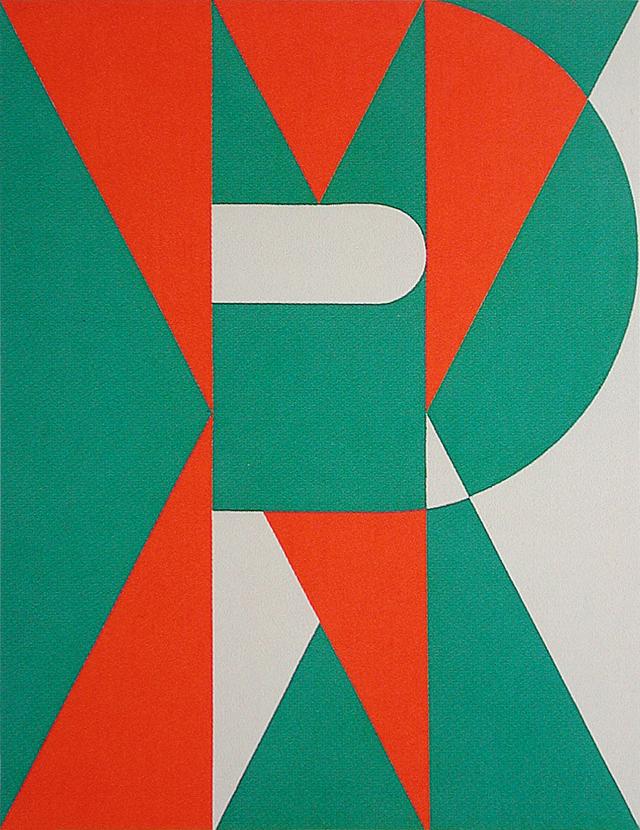Interested by the mechanisms of the world of consumption and mass media, Lucerne artist Ian Anüll first became known for his pictorial hijacking of the ® of “Registered Trademark” which he exploited sometimes as a main theme, sometimes as a stamp discreetly affixed to a corner of his creations. Subjected to the reflex of repetition, this famous sign rapidly became a kind of leitmotif, to then become the artist’s trademark. Far from being considered a simple, playful symbol, it allowed him to broach thinking tinged with cynicism about the relationships between manufactured products and works of art, and, more widely between art and its market.
His work then developed around acronyms and labels, designer or not, removed from their context and thwarted in their meaning, or simple, easily recognisable signs, as is the case here with the superposed letters in a design aesthetic which forms the title of the painting Prix (1999). Claiming no ideological vocation, but cultivating certain misunderstandings, the artist is content to show, with lucidity, the increasing exploitation of art by the cultural industry – itself subjected to economic injunctions. According to the artist, said cultural industry tends to reduce the artwork to a consumer commodity, to merchandise, and threatens human worth and the freedom of artistic work. Despite the soundness of his proposals full of wit and vigour, Ian Anüll nevertheless finds himself caught in the trap of the machine he denounces, being himself a player in this market, which he depends upon.
This vicious circle gives rise to intensified thinking, both serious and tinged with humour, which crystallises in allusive artworks with a double meaning or the potential for multiple interpretations. Concerned about being faithful to the artist’s approach, the Collection Pictet extends this dichotomy ironically, not only by acquiring Prix on the art market, but above all by choosing to exhibit it within a banking institution, which inevitably makes money one of its raw materials.
His work then developed around acronyms and labels, designer or not, removed from their context and thwarted in their meaning, or simple, easily recognisable signs, as is the case here with the superposed letters in a design aesthetic which forms the title of the painting Prix (1999). Claiming no ideological vocation, but cultivating certain misunderstandings, the artist is content to show, with lucidity, the increasing exploitation of art by the cultural industry – itself subjected to economic injunctions. According to the artist, said cultural industry tends to reduce the artwork to a consumer commodity, to merchandise, and threatens human worth and the freedom of artistic work. Despite the soundness of his proposals full of wit and vigour, Ian Anüll nevertheless finds himself caught in the trap of the machine he denounces, being himself a player in this market, which he depends upon.
This vicious circle gives rise to intensified thinking, both serious and tinged with humour, which crystallises in allusive artworks with a double meaning or the potential for multiple interpretations. Concerned about being faithful to the artist’s approach, the Collection Pictet extends this dichotomy ironically, not only by acquiring Prix on the art market, but above all by choosing to exhibit it within a banking institution, which inevitably makes money one of its raw materials.
